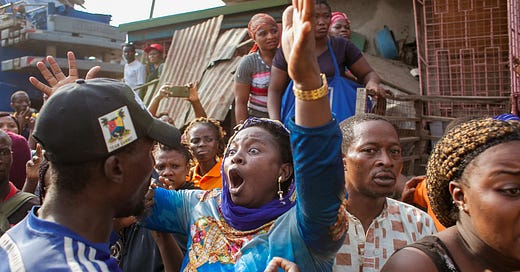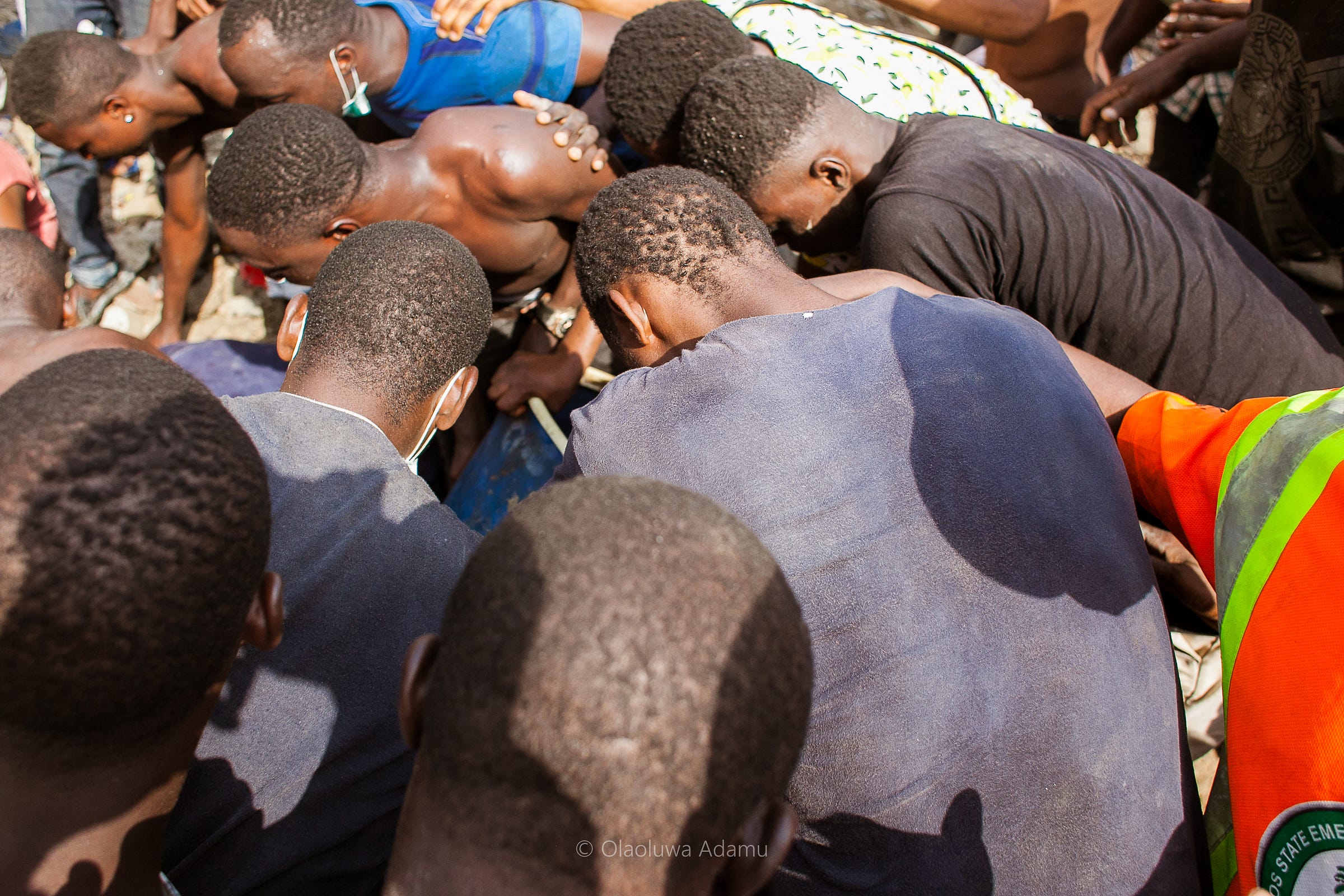Here’s a gathering of onlookers. Some stand on level ground, and others watch from a higher vantage. Each body assumes the position that gives it the most flexibility for movement. The mood is far from relaxed, as is clear from the faces, which seem to fold in one collective frown. There are some more expressive than others, in whose actions we note what is unbearably private about the crowded scene. At the back, a hand holds up a phone to take a photograph, in landscape mode. In front, a woman is seen at the moment she is changed by what she now knows; her mouth and eyes are wide and fixed. One man has turned to look at us. It is his gaze—his cool, unruffled alertness—that spells out how unevenly distributed this tragedy is.
Olaoluwa Idris Adamu: “I am adventurous and full of curiosity.”
I took the photograph in Itafaji, Lagos Island, Nigeria, about three days after a building collapsed on Mercy Street.
The photo sums up the whole accident of that period. It has a cause and effect feel to me. It raises questions that beg to be answered.
My approach to photography varies per time; one constant thing is that I am adventurous and full of curiosity.
Photography is impactful in the fact that it helps preserve memories.
Two other photographs by Olaoluwa Idris Adamu
About Olaoluwa Idris Adamu
Olaoluwa is a visual storyteller currently based in Lagos, Nigeria. He has a bachelor’s degree in History and International Studies. He is a member of the African Photojournalism Database (APJD). A certified Canon Basic DSLR user, Olaoluwa has participated in several photography workshops, including the Unabashed Photo Walk in 2017. He is interested in human-based stories that express change and transformation. Find out more about his featured work via World Press Photo, and Instagram.
Last Week — Taiwo Aina
I was working on a flooding story. I went to Koton Karfe community in Kogi State: it’s a community close to the interstate bridge that links Kogi to Abuja. The water level rose and the community was flooded.
I passed through where the water was low so that I wouldn't drown, because I wasn’t with any protective equipment. I stood on a hill higher than the normal ground, so I was able to see how badly the community was affected.
Read More: After the Fall
Support TENDER PHOTO
This is the 44th edition of this publication. The newsletter can also read on web (best for viewing images), and via the Substack iOS/Android apps. Every week I feature one photograph and the photographer who took it: you’d read a short caption from me, and a statement from the photographer. My goal is to support early to mid-career African photographers by engaging with their work. If this newsletter was shared with you, consider subscribing, or forward to a friend.
Tender Photo is entering its second year, and I need your help to increase its quality and visibility. Please complete this survey, which should take a couple minutes of your time. Thank you for your kind attention and support.







The second photograph prompts the question, are they burying or excavating. Without the sliver of an emergency uniform and the context of the first and third photographs, I would have assumed burying. I wonder how this makes a poem a poem. If a sliver and the lines after and before make the line in between.